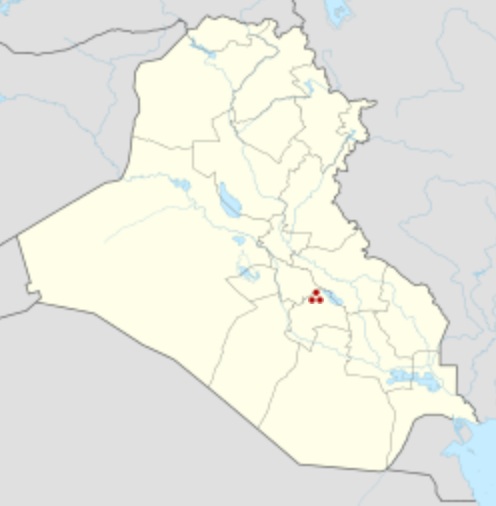
| ABU SALABIKH
Abu Salabikh shown within Iraq Location : Al-Qadisiyyah Governorate, Iraq
Region : Mesopotamia
Coordinates : 32°16'00 N 45°05'00 E
Type : Settlement
History :
Founded : Middle of the third millennium BCE
The low tells at Abu Salabikh, around 20 km (12 mi) northwest of the site of ancient Nippur in Al-Qadisiyyah Governorate, Iraq mark the site of a small Sumerian city state of the mid third millennium BCE, with cultural connections to the cities of Kish, Mari and Ebla. Its contemporary name is uncertain: perhaps this was Eresh. Kesh was suggested by Thorkild Jacobsen before excavations began. The Euphrates was the city's highway and lifeline; when it shifted its old bed (which was identified to the west of the Main Mound by coring techniques), in the middle third millennium BCE, the city dwindled away. Only eroded traces remain on the site's surface of habitation after the Early Dynastic Period. The site consists of several mounds, the 12 hectare wall enclosed Main (Early Dynastic), the 10 hectare Uruk, the West, and the 8 hectare South.
Archaeology
:
The site was a British concern after 1975, under the direction of Nicholas Postgate for the British School of Archaeology in Iraq (1975–89), after which excavations were suspended with the Invasion of Kuwait (1990); "plans to resume fieldwork have now been abandoned in the light of current political conditions" Postgate reports. The city, built on a rectilinear plan in the early Uruk period, revealed a small but important repertory of cuneiform texts on some 500 tablets, of which the originals were stored in the Iraq Museum, Baghdad, and were largely lost when the museum was looted in the early stages of the Second Iraq War; fortunately they had been carefully published. Texts, comparable in date and content with texts from Shuruppak (modern Fara, Iraq) included school texts, literary texts, word lists, and some administrative archives, as well as the Instructions of Shuruppak, a well-known Sumerian "wisdom' text of which the Abu Salabikh tablet is the oldest copy. A list of deities includes the oldest known mention of the Semitic god Ba'al. Postgate's interdisciplinary approach was integrated under the broad aim of describing the daily life of a small Sumerian city, down to the lives of the simplest illiterate inhabitants.
Source :
https://en.wikipedia.org/ |
